Computer safety is a priority for most users especially since you spend most of your waking moment online. Fortunately for Windows users, you get security built-in with the Operating System. Windows Firewall is a neat, small security application that defends you against any malicious network connections. Working silently behind the scenes, most users don’t even realize how many connections are blocked by the Firewall program.
Before we get into blocking a program, let’s understand first what connections mean. When you browse the internet using Google Chrome, for example, the browser sends (outbound) a message from your computer to the internet. When you see the webpage on the browser this means the connection was successful and data was returned (inbound). Remember these terminologies – inbound and outbound – as you will be using them to block a program in the advanced method section below.
Simple method
Remove a program from allowed apps list in Firewall settings
Open the Start menu on your PC and type “Windows Defender Firewall”, then select the “Windows Defender Firewall” (Control panel option) from the search results to access the default firewall settings screen on your PC.

On the Windows Defender Firewall settings screen, click “Allow an app or feature through Windows Defender Firewall” option on the upper-left side of the window.

Click “Change settings” on the Allowed apps screen to modify an app’s access through the firewall.

Scroll through the list of programs installed on your PC on the Allowed apps screen. Once you find the program you wish to block in Windows Firewall, uncheck it so that it’s blocked from accessing the internet.
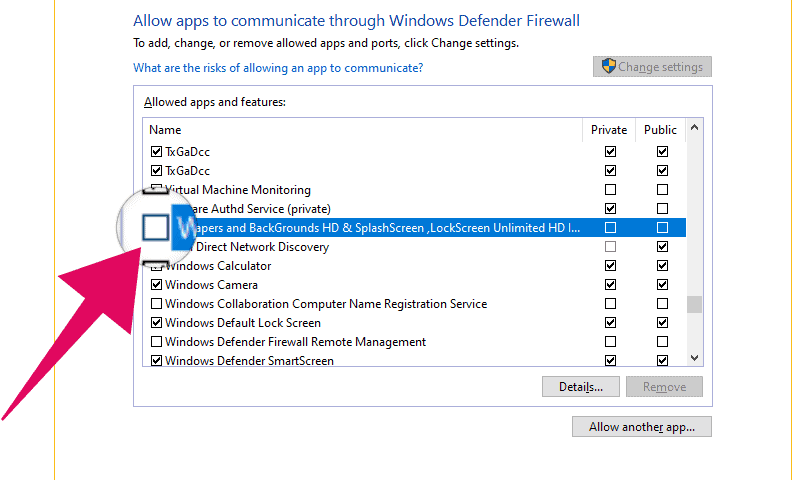
Click “OK” at the bottom of the “Allowed apps” window after you have made the necessary changes. Blocked apps and features in the Windows Defender Firewall settings screen will no longer be able to communicate with the internet.
Advanced method
Block inbound and outbound connections of a program
If you can’t find the program you want to block in the Allowed apps list, then here’s an advanced guide to block a program’s by its installation path on your PC.
Open the Start menu on your PC and type “Windows Defender Firewall”, then select the “Windows Defender Firewall” (Control panel option) from the search results to access the default firewall settings screen on your PC.

On the Windows Defender Firewall settings page, click “Advanced settings” on the left panel of the screen.
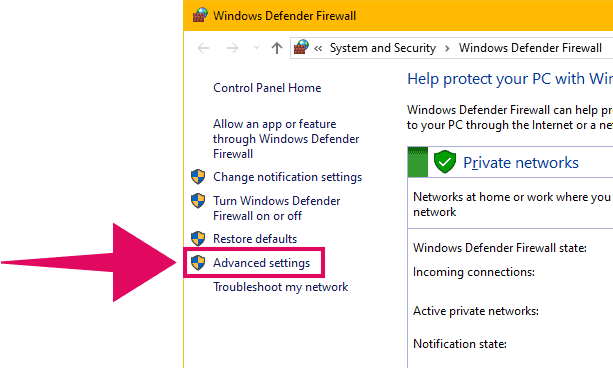
This will open up the advanced security options of the Windows Defender Firewall. We’ll create “Inbound Rules” and “Outbound Rules” from here for the program you wish to block in Windows Firewall.
💡 Tip
For every program you wish to block in Firewall, you need to create the same rules for both inbound and outbound connections to block all network activity.
Click “Inbound Rules” on the left panel of the screen. You will see a list of all active inbound rules for apps and services installed on your PC.
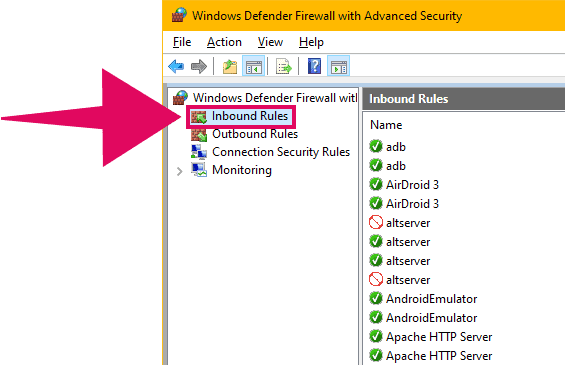
Then click “New rule” button at the right side underneath the “Actions” panel. This will pop a window where you can easily create a new inbound rule.
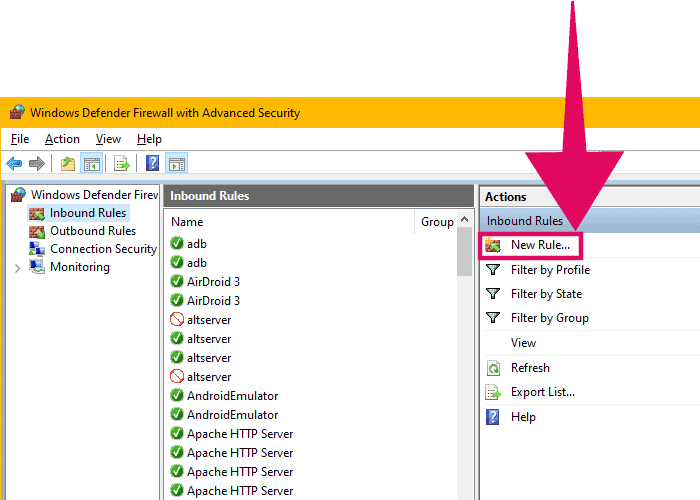
On the “New Inbound Rule Wizard” screen, make sure “Program” option is selected and then click the “Next” button.
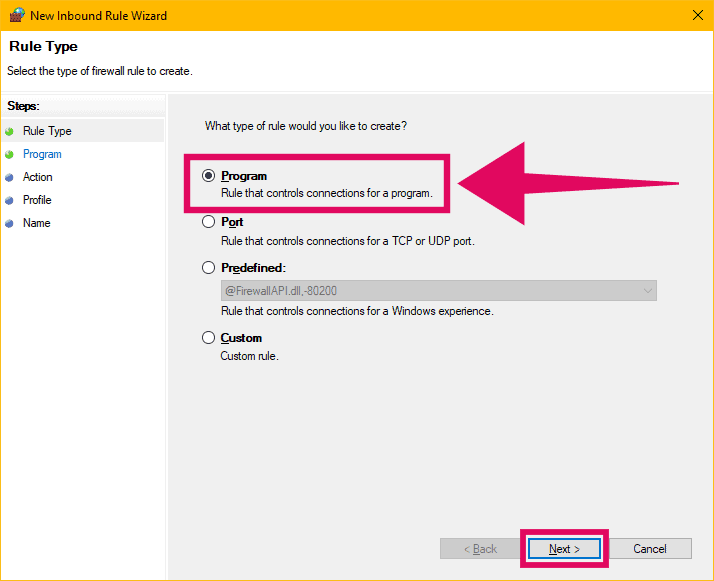
On the next screen, you need to provide the installation path for the program you wish to block. There are two ways of doing this:
If the program you want to block has a shortcut on the desktop screen, right-click on the shortcut » select Properties » and then copy the program path from the target field.
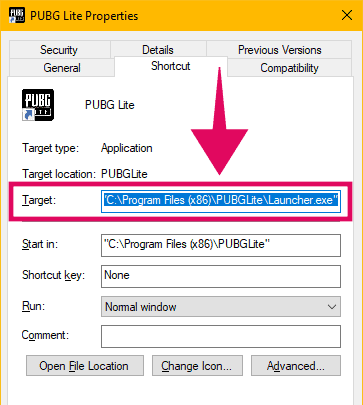
Paste the installation path in the “Program path” field on the inbound rule wizard window, and then hit the Next button.

💡 Tip
If you can’t copy the program path from a shortcut on your desktop screen. Use the “Browse” button to find and select the program from (probably) your PC’s “Program files” installation directory.
On the next step, select “Block the connection” option and the Next button.
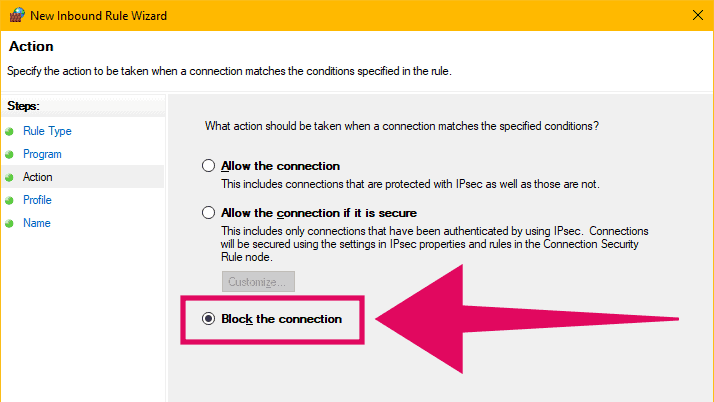
The next step “Profile” is very important as it is where you define the applicability of rule you are creating. Since the purpose of this guide is to completely block a program via Firewall, we’ll tick all three checkboxes — Domain, Private and Public.

On the last step, give the new rule a name and a description for future reference. Then hit the “Finish” button to exit the wizard and activate the new rule.
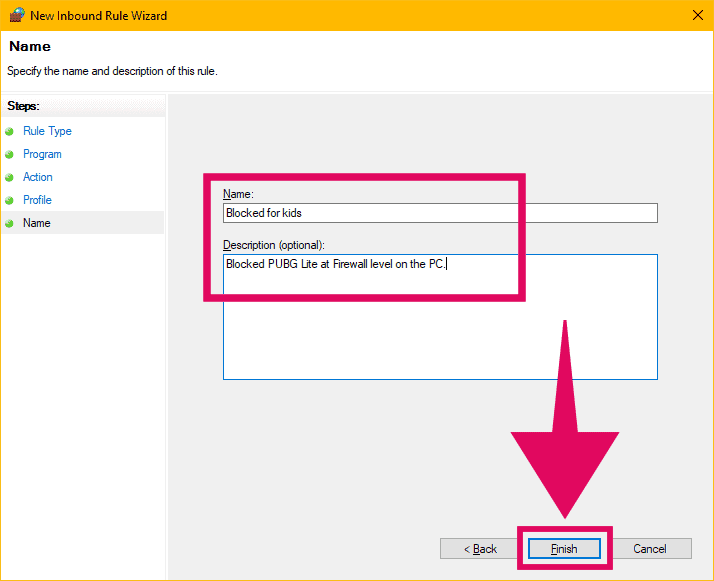
Similarly, create an outbound rule for the same program with the same conditions. To create an outbound rule, select “Outbound Rules” from the left side panel on the “Windows Defender Firewall with Advanced Security” screen, and then click the “New Rule” on the right side underneath the “Actions” panel.
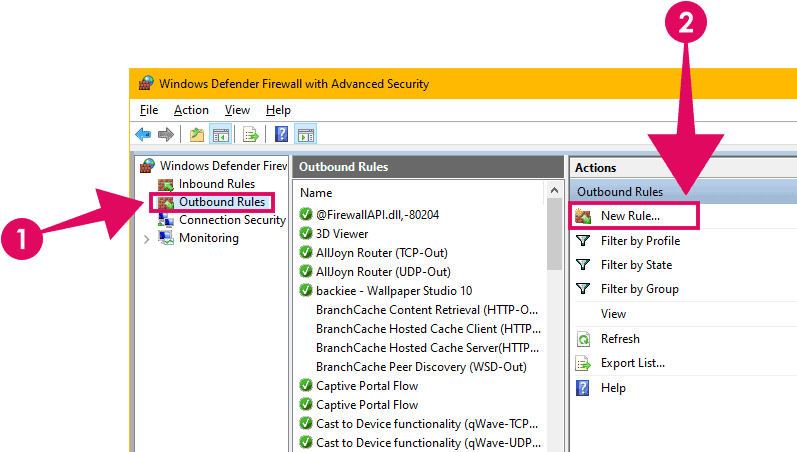
It’s essential that you create an outbound rule, or else the program won’t be completely blocked in firewall on your Windows PC.










Member discussion